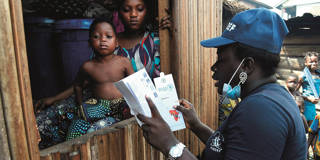Many emerging markets and developing countries face a dilemma: borrow and risk a debt crisis, or choose austerity and risk a development crisis. Resolving it will require policymakers to address two collective-action problems that markets cannot resolve on their own.
WASHINGTON, DC – The COVID-19 pandemic is, we hope, only a temporary shock to economies everywhere. The appropriate policy response to such a disruption is to borrow to cushion the impact on consumption and investment. But for many emerging markets and developing countries, borrowing could result in debt-servicing difficulties that require years of austerity to overcome. Yet, if they do not borrow, they will have to cut public spending, which could mean major health crises, children out of school, job losses, and prolonged recession.
What to do? Borrow and risk a debt crisis, or choose austerity and risk a development crisis?
In 2020, countries took very different approaches, largely linked to their income. Governments in advanced economies provided trillions of dollars of direct and indirect fiscal support, equivalent to 24% of GDP, while those in emerging and developing economies provided just 6% and 2% of GDP, respectively.

WASHINGTON, DC – The COVID-19 pandemic is, we hope, only a temporary shock to economies everywhere. The appropriate policy response to such a disruption is to borrow to cushion the impact on consumption and investment. But for many emerging markets and developing countries, borrowing could result in debt-servicing difficulties that require years of austerity to overcome. Yet, if they do not borrow, they will have to cut public spending, which could mean major health crises, children out of school, job losses, and prolonged recession.
What to do? Borrow and risk a debt crisis, or choose austerity and risk a development crisis?
In 2020, countries took very different approaches, largely linked to their income. Governments in advanced economies provided trillions of dollars of direct and indirect fiscal support, equivalent to 24% of GDP, while those in emerging and developing economies provided just 6% and 2% of GDP, respectively.